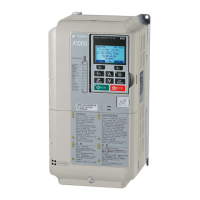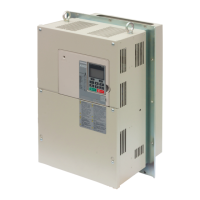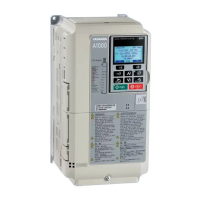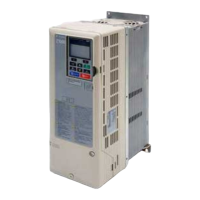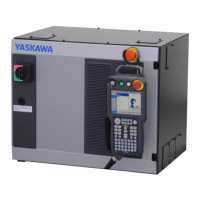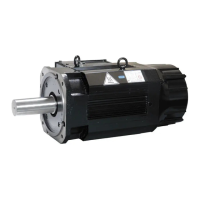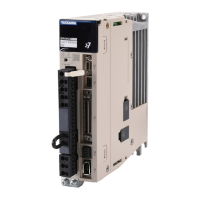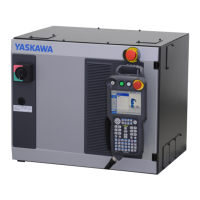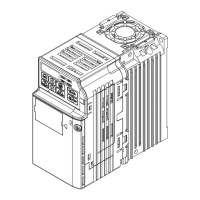Cause Possible Solutions
Reaching the torque limit.
• Check the settings for the torque limit (L7-01 through L7-04).
• If the torque limit is enabled, deceleration might take longer than expected because the drive
cannot output more torque than the limit setting. Ensure the torque limit is set to a high enough
value.
• Increase the torque limit setting.
• If multi-function analog input terminal A1, A2, or A3 is set to torque limit (H3-02, H3-10, or
H3-06 equals 10, 11, 12, or 15), ensure that the analog input levels are set to the correct levels.
• Ensure H3-02, H3-10, and H3-06 are set to the right levels.
• Ensure the analog input is set to the correct value (U1-13 to U1-15).
Load exceeded the internal torque limit determined by
the drive rated current.
Switch to a larger capacity drive.
u
Noise From Drive or Motor Cables When the Drive is Powered On
Cause Possible Solutions
Relay switching in the drive
generates excessive noise.
• Install a noise filter on the input side of drive input power.
• Install a noise filter on the output side of the drive.
• Place the wiring inside a metal conduit to shield it from switching noise.
• Ground the drive and motor properly.
• Separate the main circuit wiring and the control lines.
• Make sure wires and the motor have been properly grounded.
u
Ground Fault Circuit Interrupter (GFCI) Trips During Run
Cause Possible Solutions
Excessive leakage current trips
GFCI.
• Check the wiring and rating of peripheral devices.
• Increase the GFCI sensitivity or use GFCI with a higher threshold.
• Reduce the length of the cable used between the drive and the motor.
• Install a noise filter or reactor on the output side of the drive. Set the carrier frequency to 2 kHz when connecting
a reactor.
• Disable the internal EMC filter.
u
Connected Machinery Vibrates When Motor Rotates
n
Unexpected Noise from Connected Machinery
Cause Possible Solutions
The drive output frequency is the same as the resonant
frequency of the connected machinery.
• Adjust the parameters used for the Jump frequency function (d3-01 through d3-04) to skip the
problem-causing bandwidth.
• Place the motor on a rubber pad to reduce vibration.
n
Oscillation or Hunting
Cause Possible Solutions
Insufficient tuning.
Perform Auto-Tuning.
Refer to Motor Performance Fine-Tuning on page 176.
Gain is too low when using PID control. Refer to b5: PID Control on page 33 for details.
The frequency reference is assigned to an external
source and the signal is noisy.
• Ensure that noise is not affecting the signal lines.
• Separate main circuit wiring and control circuit wiring.
• Use twisted-pair cables or shielded wiring for the control circuit.
• Increase the analog input time filter constant (H3-13).
The cable between the drive and motor is too long.
• Perform Auto-Tuning.
• Reduce the length of the cable.
2.10 Troubleshooting without Fault Display
YASKAWA ELECTRIC SIEP YEAHHP 01B YASKAWA AC Drive – A1000 HHP Programming Manual
231
2
Troubleshooting
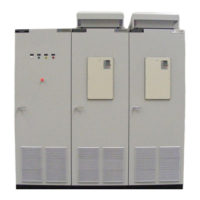
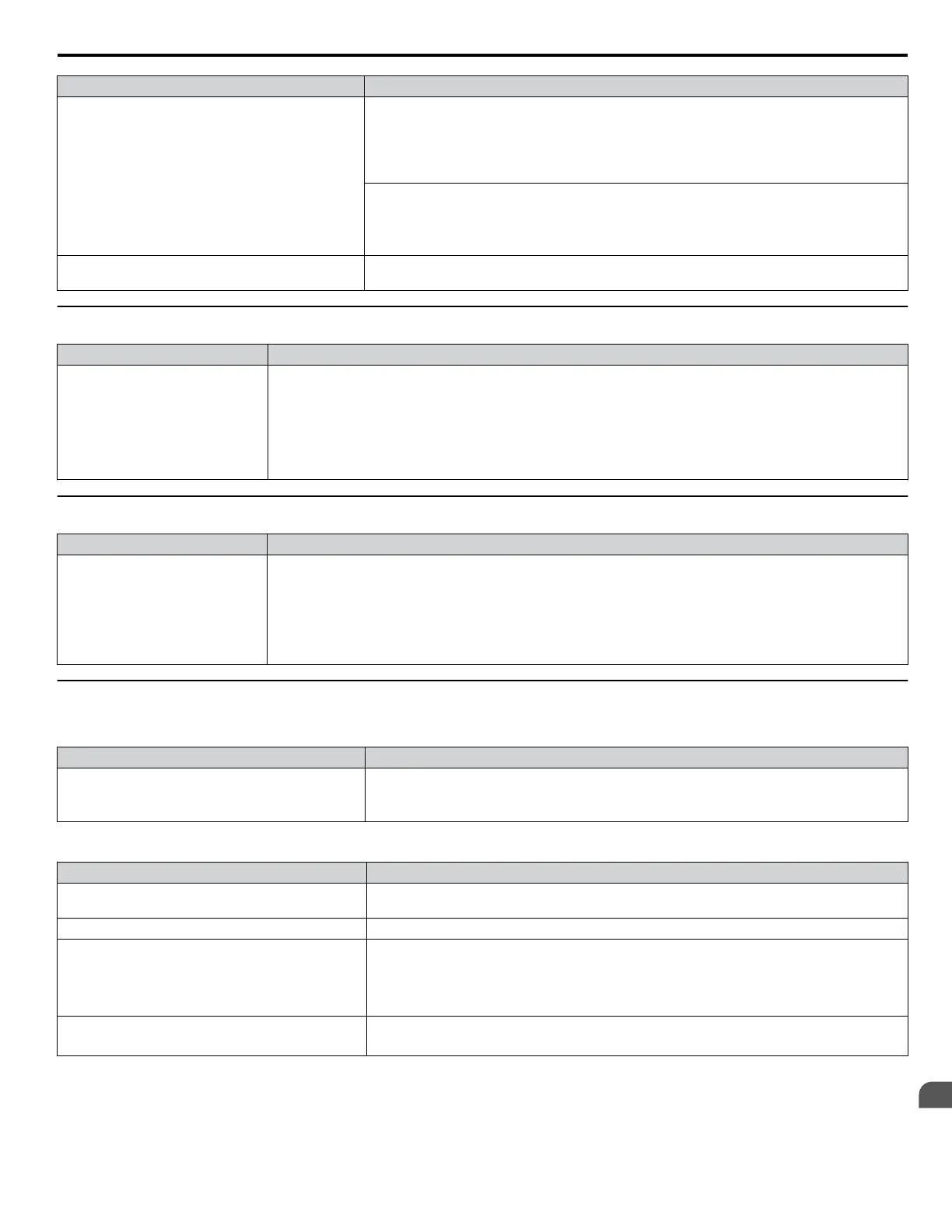